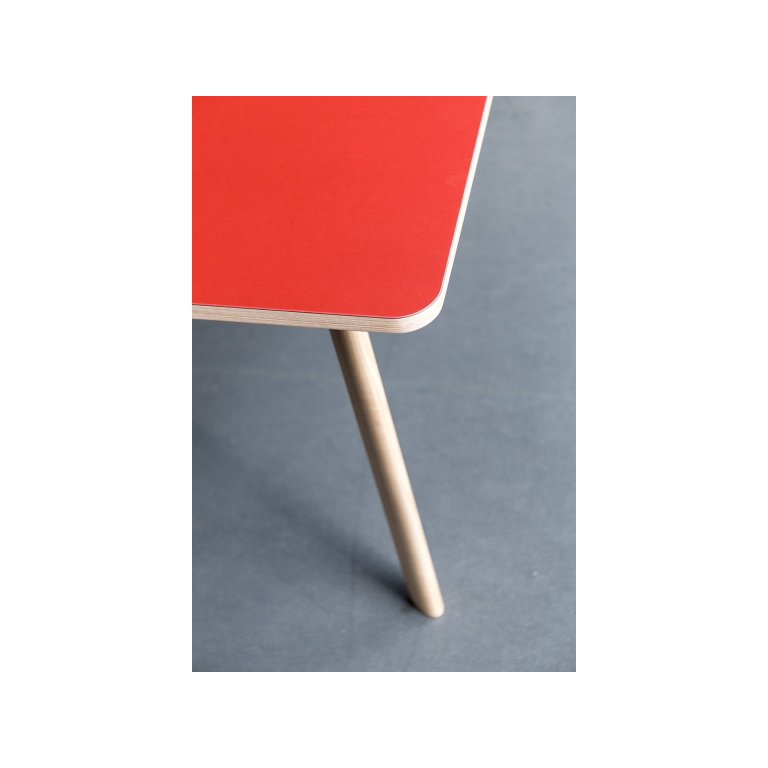Linoleum tabletop with straight 90° edge
The cores of the tabletops with straight edges consist of either Valchromat, which is a through-coloured MDF (in grey) or birch chipboard in two different thicknesses. The edges of these tabletop are not fitted with edge bands but are instead untreated and sanded. This open-pored table edge is possible because both types of the tabletop cores are moisture resistant and resilient. If you want, the edge can be treated and sealed with BIOFARBEN hard oil or work top oil.
The standard procedure with the tabletop corners is to round them off with a small 3 mm diameter; optionally, you can have the corners rounded even more to a 25 mm or a 50 mm radius.
The given thickness of a tabletop always refers to the total thickness: tabletop core plus 2 mm linoleum.
MDF tabletops require supporting rails beneath them because they are not all that sturdy - they will otherwise tend to sag even when spanning over a relatively short distance. This makes them particularly suitable for use with our MODULOR TABLE SYSTEMS and also with the E2 table frame if the corresponding tabletop supporter accessories are put to use. The multiplex panels that are only 20 mm thick require rails for support when serving as tabletops while those that are 26 mm thick can indeed be lain on a 1300 mm wide E2 table frame without the need for the tabletop supporter accessories.
Linoleum is made from renewable raw materials such as wood, granulated cork, linseed oil and jute. Its homogeneous, matte but nevertheless non-slip surface is perfect for drawing or writing. They make, then, great writing tables but can be used as shelving or kitchen counters as well (short-term heat-resistance up to 70°C ).
The material feels good to the touch, has anti-bacterial and antistatic properties and conducts electricity (its bleeder and contact resistance is between app. 109 and 1010 Ω). Because of these attributes, linoleum covered table tops are perfect for use in the therapeutic and technical realms.
The colour of the linoleum coating that you see at the time of delivery will change slightly with time. The reason for this is the light yellow “drying-oven film” which will eventually disappear after the coating has been out in the daylight for a number of hours.
Care and cleaning of linoleum is best done with special agents like HARELL CARE and CLEANING SET FOR LINOLEUM, which, together with comprehensive instructions for use, can be found in our product assortment.
